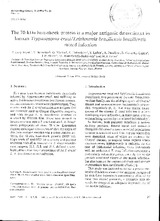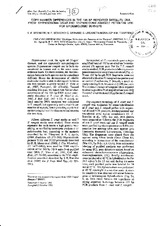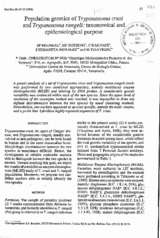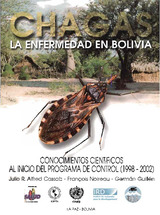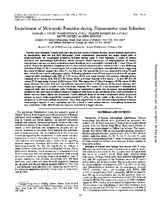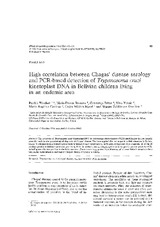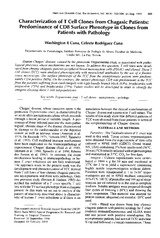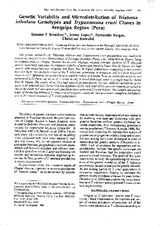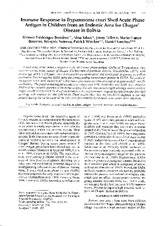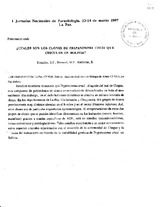Buscar
Mostrando ítems 1-10 de 49
The 70-kDa heat-shock protein is a major antigenic determinant in human Trypanosoma cruzi/Leishmania braziliensis braziliensis mixed infection
(Immunology Letters, 1991)
Summary.
Five sera from Bolivian individuals chronically infected by Trypanosoma cruzi, and suffering an active Leishmania braziliensis braziliensis metastasic mucocutaneous lesion were characterized. They reacted with ...
Copy number differences in the 195 BP repeated satellite DNA from Trypanosoma cruzi and Trypanosoma rangeli : potential use for epidemiologic surveys
(Mem. Inst. Oswaldo Cruz, 1993)
Trypanosoma cruzi, the agent of Chagas' disease, and the apparently non-pathogenic species Trypanosoma rangeli can be both encountered in human and in the same mammiferous hosts. On fresh isolates, the discrimination between ...
Population genetics of Trypanosoma cruzi and Trypanosoma rangeli : taxonomical and epidemiological purpose
(Biol Res, 1993)
A genetic analysis of a set of Trypanosoma cruzi and Trypanosoma rangeli stocks was performed by two combined approaches, namely mutilocus enzyme electrophoresis (MLEE) and labeling by DNA probes. A considerable genetic ...
La cardiopatía chagásica crónica
(E.G., 1999)
En las áreas endémicas de Latinoamérica, la enfermedad de Chagas es un problema importante de salud pública, principalmente por debilitación grave debida a lesiones del corazón. De los 15 a 20 millones de personas que están ...
Impairment of monocytic function during Trypanosoma cruzi infection
(Clinical and Diagnostic Laboratory Immunology, 1994-11)
During acute infection, Trypanosoma cruzi, the etiologic agent of Chagas' disease, causes immunosuppression by mechanisms that are not fully delineated. Since mononuclear phagocytes are major target cells in trypanosomiasis, ...
High correlation between Chagas' disease serology and PCR-based detection of Trypanosoma cruzi kinetoplast DNA in Bolivian children living in an endemic area
(FEMS Microbiology Letters, 1994)
Abstract. The detection of Trypanosoma cruzi kinetoplast DNA by polymerase chain reaction (PCR) amplification is a potentially powerful tool for the parasitological diagnosis of Chagas’ disease. We have applied this technique ...
Characterization of T cell clones from Chagasic patients : predominance of CD8 surface phenotype in clones from patients with pathology
(Mem. Inst. Oswaldo Cruz, 1995)
ABSTRACT.
Human Chagas' disease, caused by the protozoan Trypanosoma cruzi, is associated with pathological processes whose mechanisms are not known. To address this question, T cell lines were developed from chronic ...
Genetic variability and microdistribution of Triatoma infestans genotypes and Trypanosoma cruzi clones in Arequipa región (Peru)
(Mem. Inst. Oswaldo Cruz, 1997)
The genetic variability of Triatoma infestans and Trypanosoma cruzi populations was studied by isoenzyme analysis in two distinct areas of Arequipa province (Peru); one, Santa Rita de Siguas, being an endemic area for ...
Immune response to Trypanosoma cruzi shed acute phase antigen in children from an endemic area for Chagas'disease in Bolivia
(Mem. Inst. Oswaldo Cruz, 1997)
A field study of the immune response to the shed acute phase antigen (SAPA) of Trypanosoma cruzi was carried out in the locality of Mizque, Cochabamba department, Bolivia. Schoolchildren (266), with an average of 8.6 ± 3.6 ...
¿Cuáles son los clones de Trypanosoma cruzi que circulan en Bolivia?
([s.n.], 1997-03)

